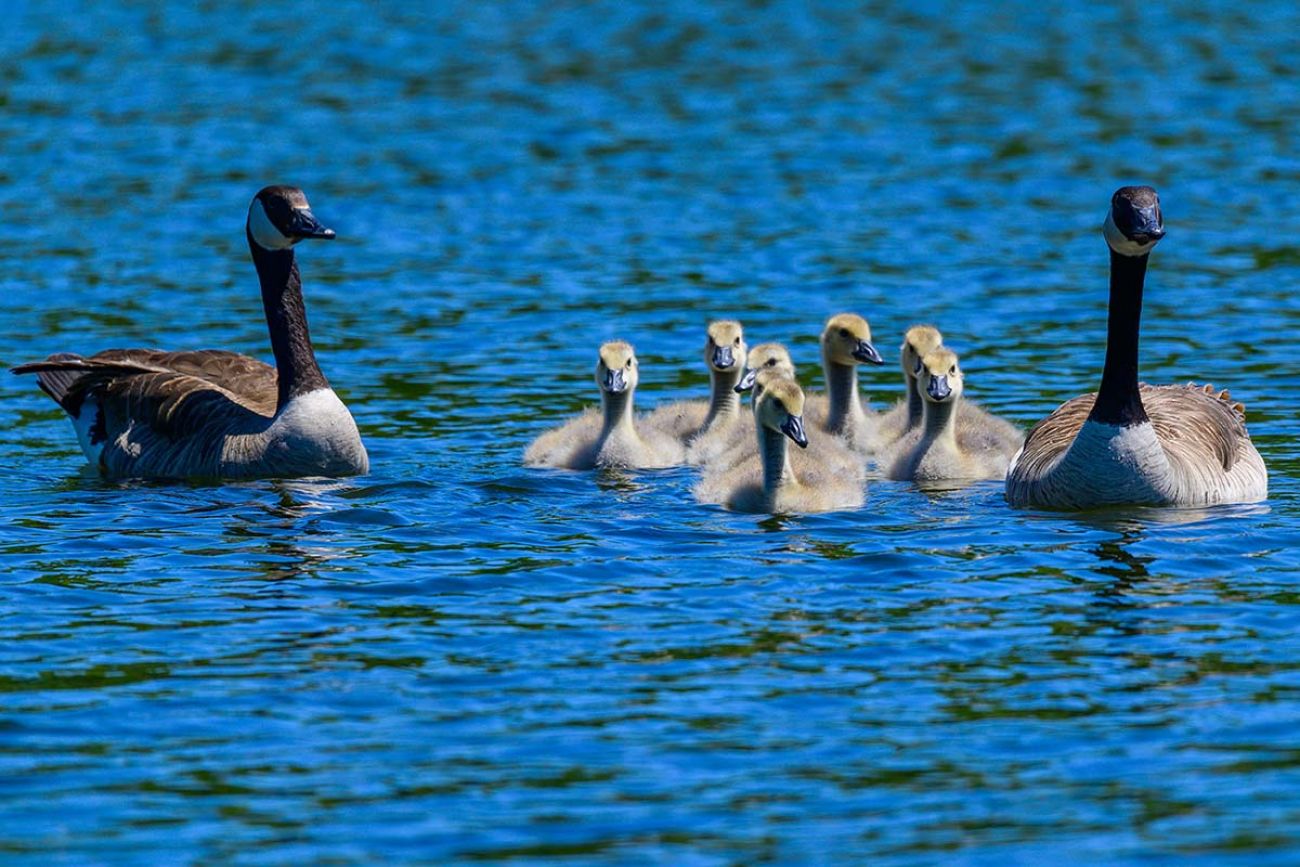Duck and goose populations booming in Michigan. Other birds? Not so much.

Michigan’s duck and geese populations are soaring as receding water levels created the perfect wetland breeding conditions last year, even as most bird species struggle.
Waterfowl are breeding in record numbers: A recent state study found duck populations are up 191 percent and Canada goose populations are up 21 percent from 2019.
That’s thanks largely to Great Lakes water levels that have fallen since 2020 but remain above long-term averages.
Related:
- Michigan moves to expand bobcat hunting as other states eye restrictions
- Feds earmark $226 million for Great Lakes invasive carp project
- Walleye love perch too much. So Michigan is expanding walleye fishing.
“Increased populations will not likely have any visible impacts except that wildlife viewers and waterfowl hunters may have more birds to see,” said Barbara Avers, a waterfowl and wetland specialist for the state Department of Natural Resources.
Members of the Natural Resources Commission, the agency that considers wildlife regulations, are expected to discuss the survey when they meet Feb. 10 in Lansing.
Waterfowl are a rare success story these days among birds.
Habitat loss caused by climate change and urbanization has helped decrease the North American bird population by 2.9 billion breeding adults, down from some 10.1 billion nearly a half-century ago, according to a 2019 study, Nearly 3 Billion Birds Gone.
Forests across North America lost 1 billion birds and grassland bird populations, — like Michigan’s endangered Henslow’s sparrow populations that have declined 12 percent annually — have fallen by 53 percent, or another 720 million birds. The declines are mainly due to habitat loss caused by climate change and urbanization.
But ducks, wild turkeys, bald eagles and other waterfowl are benefiting from conservation efforts, said Erin Rowan, a MI Birds Program associate for Audubon Great Lakes.
“And one of the reasons for that, especially the wild turkey and duck conservation, is that conservation has been led by hunters for decades with a lot of success,” Rowan said.
Hunting licenses pay for 90 percent of the conservation and management of state wildlife areas, Rowan said.
According to the DNR, which did an aerial survey of the birds during the breeding season, there were an estimated 973,051 ducks, 309,993 mallards, and 295,635 Canada geese in Michigan last year.
All three waterfowl tend to stay in the state throughout the summer and nest in all 83 counties.
According to a U.S. Fish and Wildlife Service report, there were 1 million active waterfowl hunters in the United States during the 2020-2021 season, up from 989,500 in the 2019 to 2020 season.
Michigan hunters shot 252,800 ducks last year, up from 235,300 in 2019, and killed the most Canada geese, 171,000, in the Mississippi Flyway, a route regularly used by large numbers of migrating birds.
Steve Shifflett, who lives in Silverwood in Lapeer County, said the water in the pond behind his house has gone up and so has the number of ducks he sees there. He mainly hunts waterfowl on his property.
“The number of ducks we saw this year was better than any other year,” Shifflett said. “The flooding sent the water higher up into the cattails and we could just hear ducks all morning.”
Shifflett buys a license each year to hunt ducks and geese. He also hunts turkey and noticed there were more people hunting the bird at the start of the coronavirus pandemic than he’s ever seen.
“There’s an awful lot of people buying licenses,” Shifflett said. “Even if I don’t plan on hunting waterfowl a lot, I definitely buy the ducks stamps and get my license because it helps fund the non-hunting wildlife refuges as well.”
According to Rowan, with hunting on the decline since the 1990s, the future of bird conservation could be at risk.
“But we did see an uptick in licensed sales during the pandemic. We hope we can contain that but it’s kind of a Band-Aid on a bigger problem,” Rowan said.
Birds are threatened by the loss of wetlands: One state report showed that Michigan had 10.7 million acres of wetlands before European settlers arrived. But since the early 1880s, the state has lost more than 50 percent of those areas.
Duck and geese populations fluctuate on a year-by-year basis depending on water levels. State water levels fluctuating every two or three years is a good thing, according to Don Uzarski, director of Central Michigan University’s Institute for Great Lakes Research.
When water levels are too low, vegetation overtakes an area, and that is not the ideal habitat for breeding ducks or geese. When they are too high, the bird nests can wash away.
Michigan’s water levels have fluctuated every five to eight years, and Uzarski says that’s not normal.
“Waterfowl like Hemi-marshes, which are 50 percent open water and 50 percent vegetated,” Uzarski said. “You need the water level to fluctuate every few years because that combination, enough vegetation and water moving through it, creates their perfect habitat.”
While national duck and geese populations are up, populations in some states experiencing low water levels caused by climate change are struggling. According to one report, North Dakota’s prairie nesting grounds in 2021 were much drier than the flooded conditions in recent years which resulted in certain duck population declines ranging between 48 percent and 65 percent.
Even with Michigan’s high water levels, some duck populations continue to struggle. Rowan said that is because many of the state’s wetlands are not in the best condition and struggle with the introduction of invasive species. They could also be impacted by climate change threats such as droughts, flooding, fires, and urbanization.
In Michigan, the mallard duck population was up by 73 percent compared to 2019, but it is 7 percent below the long-term average. Scott Winterstein, a Michigan State University professor in the department of fisheries and wildlife, said that it is odd because higher water levels generally correlate with higher mallard numbers.
“It is not a perfect relationship, meaning that every year water levels went up did not guarantee more mallards the next year, but it was a very strong significant trend,” Winterstein said. “From 2008 to 2018, however, as water levels increased, the trend in mallard numbers was flat to slightly decreasing.”
It is uncertain why mallards are struggling compared to other duck species, according to Winterstein who is researching the issue with other scientists in Wisconsin, Ohio, Indiana, and Illinois.
Michigan Environment Watch
Michigan Environment Watch examines how public policy, industry, and other factors interact with the state’s trove of natural resources.
- See full coverage
- Subscribe
- Share tips and questions with Bridge environment reporter Kelly House
Michigan Environment Watch is made possible by generous financial support from:
Our generous Environment Watch underwriters encourage Bridge Michigan readers to also support civic journalism by becoming Bridge members. Please consider joining today.
See what new members are saying about why they donated to Bridge Michigan:
- “In order for this information to be accurate and unbiased it must be underwritten by its readers, not by special interests.” - Larry S.
- “Not many other media sources report on the topics Bridge does.” - Susan B.
- “Your journalism is outstanding and rare these days.” - Mark S.
If you want to ensure the future of nonpartisan, nonprofit Michigan journalism, please become a member today. You, too, will be asked why you donated and maybe we'll feature your quote next time!






